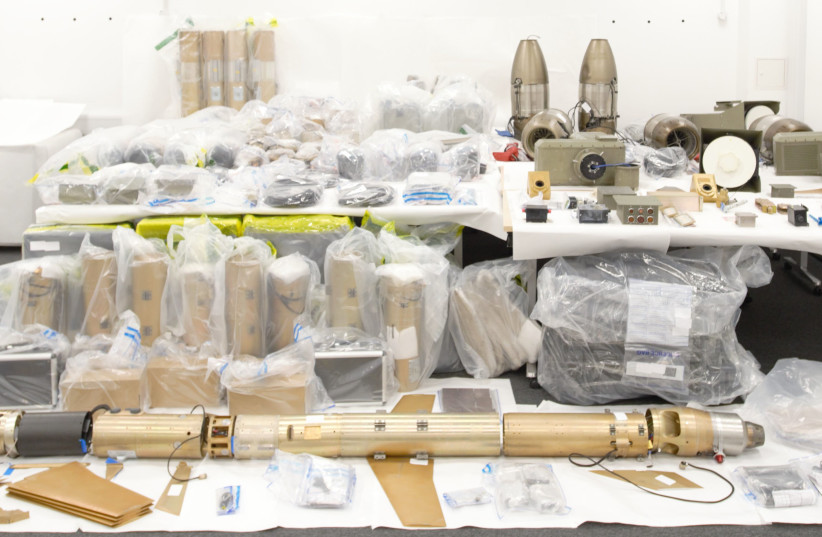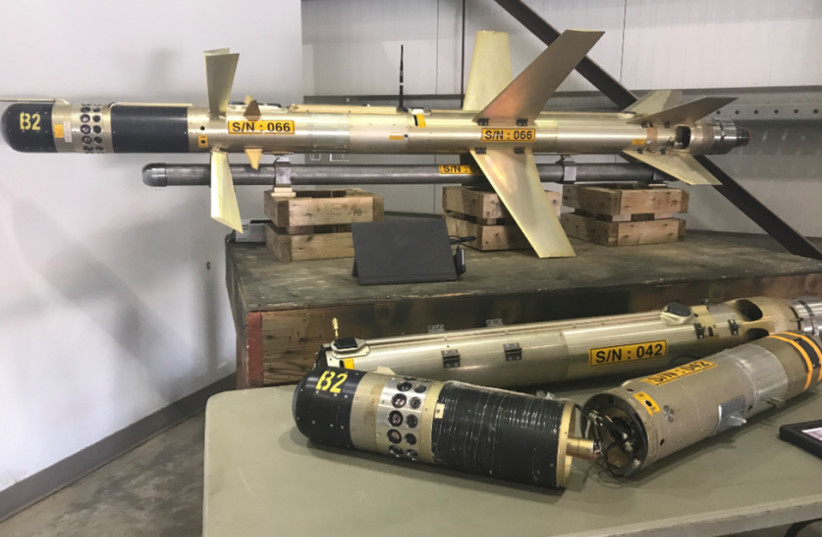A "massive volume of explosive material" being smuggled from Iran to Yemen was intercepted by the US 5th Fleet on November 8, the US Central Command and the fleet announced on Tuesday morning.
The 360,000 pounds of material, over 100 tons of urea fertilizer and 70 tons ammonium perchlorate, was discovered on a 'stateless' dhow vessel in the Gulf of Oman. CENTCOM explained that urea fertilizer is used in the production of explosives, and ammonium perchlorate is used in the production of rocket and ballistic missile fuel.
After the vessel was searched, US forces sank it and transferred its four Yemeni crew to civil authorities.
“The unlawful transfer of lethal aid from Iran does not go unnoticed. It is irresponsible, dangerous and leads to violence and instability across the Middle East,” said Cooper.

“This was a massive amount of explosive material, enough to fuel more than a dozen medium-range ballistic missiles depending on the size.”
US Naval Forces Central Command head Vice Adm. Brad Cooper
Iranian smuggling to Yemen's Houthi
NAVCENT Public Affairs said that the interception was made in "a route historically used to traffic weapons to the Houthis in Yemen," in violation of a 2015 UN Security Council resolution 2216 that imposed "a targeted arms embargo" that came to include the Houth with 2022 UNSC resolution 2624.
Iran has been supplying the Houthi with various weapon platforms in their Civil War in Yemen, which has involved a coalition of forces led by neighboring Saudi Arabia. According to the US Justice Department, the Islamic Revolutionary Guard Corps (IRGC) orchestrated smuggling efforts in past US interdictions. These efforts have often involved the use of speedboats or dhow sailboats.
Security and stability in the region
"Alongside our partner forces, CENTCOM is committed to security and stability of the region and to deterring the illegal and destabilizing flow of explosive material into the region over land, in the air, and at sea," said CENTCOM commander General Michael "Erik" Kurilla.
Kurilla had spent the past week speaking to leaders from "partnered militaries in the Middle East" including those of Yemen, according to a Thursday statement by CENTCOM spokesman Joe Buccino.
The CENTCOM commander landed in Israel on Tuesday morning as a guest of IDF Chief of Staff Aviv Kohavi in order to deepen ties between the US and Israeli militaries, the IDF announced.
Previous major seizures of Iranian arms
In January and February, the UK Navy for the first time seized Iranian military equipment destined for Yemen. The weapon seizures occurred during routine maritime security operations on January 28 and February 25 and included rocket engines for the Iranian-made 351 cruise missiles and an arsenal of 358 surface-to-air missiles (SAMs).
In Late 2019 and early 2020, the US seized approximately 1.1 million barrels of oil and hundreds of missiles from several Iranian vessels in the Arabian Sea. This included surface-to-air missiles, anti-tank missiles, and thermal optics, as well as components for naval surface-to-surface cruise missiles, anti-ship cruise missiles, drones, and other missiles.

Like the interception on Tuesday, in 2019 and 2020 the caches were seized from flagless dhows.
